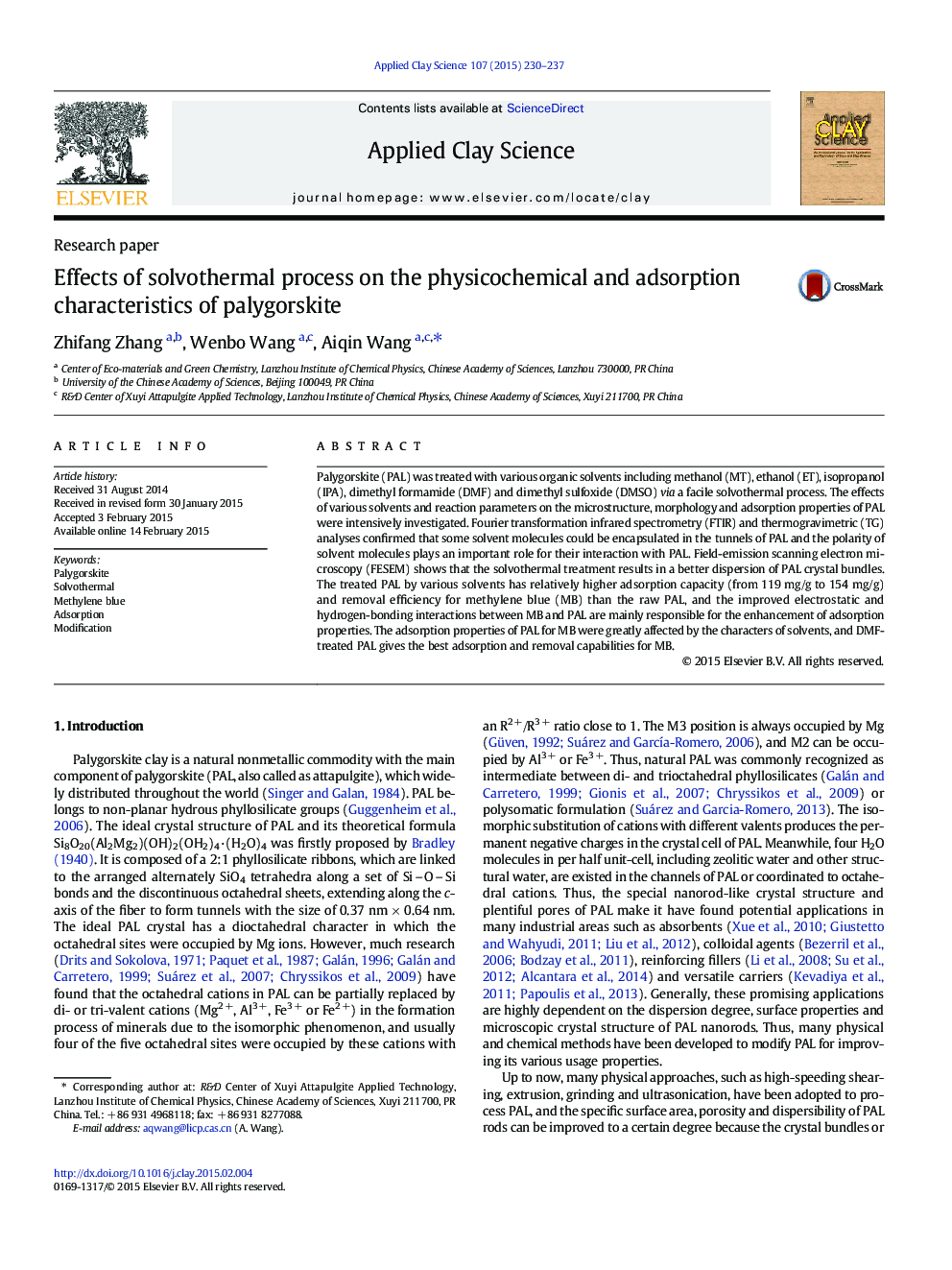| Article ID | Journal | Published Year | Pages | File Type |
|---|---|---|---|---|
| 1694549 | Applied Clay Science | 2015 | 8 Pages |
•PAL was treated by a simple solvothermal process in various solvents.•Effect of treatment on structure and physicochemical properties was investigated.•The interaction of various types of solvents with PAL was deeply explored.•Adsorption capability for MB was clearly enhanced after treatment.•Solvothermal method provides a new approach to extend application of PAL.
Palygorskite (PAL) was treated with various organic solvents including methanol (MT), ethanol (ET), isopropanol (IPA), dimethyl formamide (DMF) and dimethyl sulfoxide (DMSO) via a facile solvothermal process. The effects of various solvents and reaction parameters on the microstructure, morphology and adsorption properties of PAL were intensively investigated. Fourier transformation infrared spectrometry (FTIR) and thermogravimetric (TG) analyses confirmed that some solvent molecules could be encapsulated in the tunnels of PAL and the polarity of solvent molecules plays an important role for their interaction with PAL. Field-emission scanning electron microscopy (FESEM) shows that the solvothermal treatment results in a better dispersion of PAL crystal bundles. The treated PAL by various solvents has relatively higher adsorption capacity (from 119 mg/g to 154 mg/g) and removal efficiency for methylene blue (MB) than the raw PAL, and the improved electrostatic and hydrogen-bonding interactions between MB and PAL are mainly responsible for the enhancement of adsorption properties. The adsorption properties of PAL for MB were greatly affected by the characters of solvents, and DMF-treated PAL gives the best adsorption and removal capabilities for MB.
Graphical abstractFigure optionsDownload full-size imageDownload as PowerPoint slide
